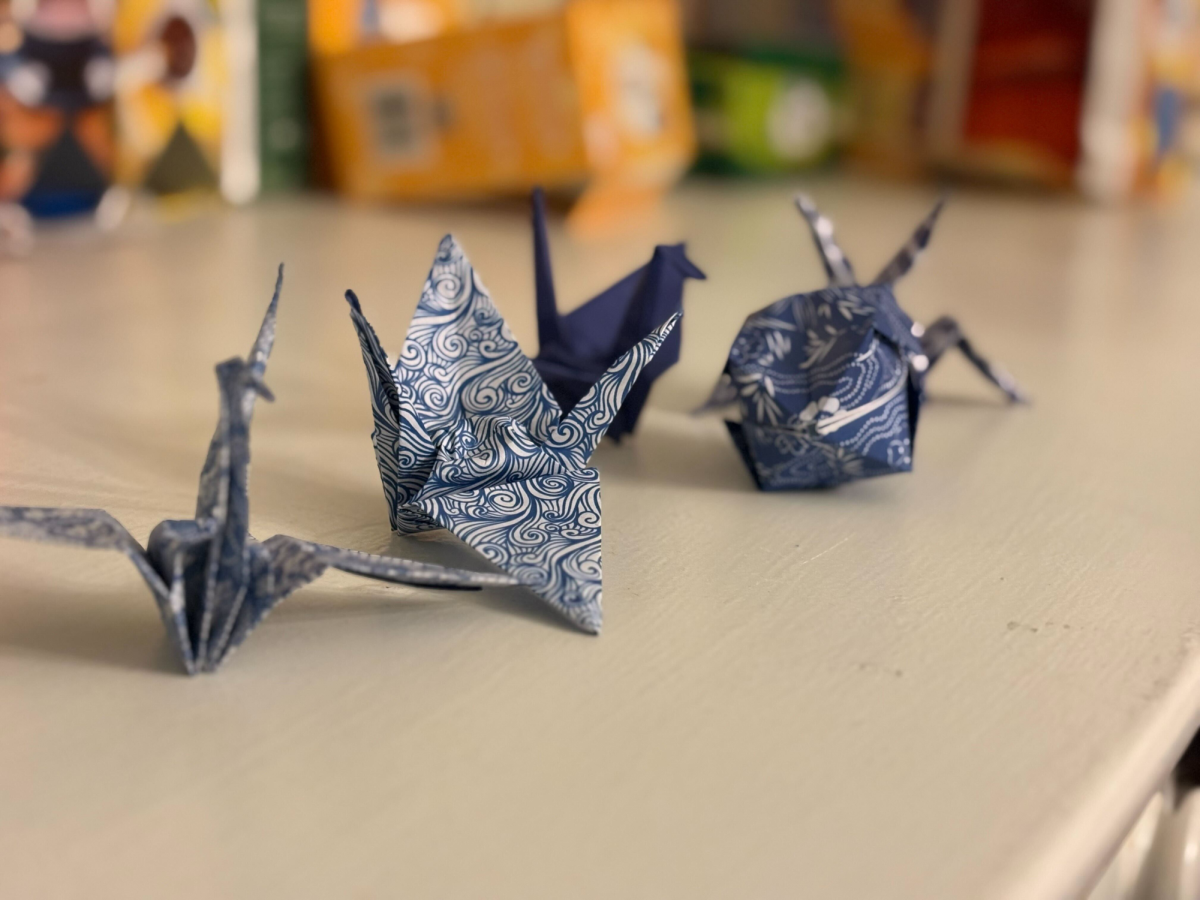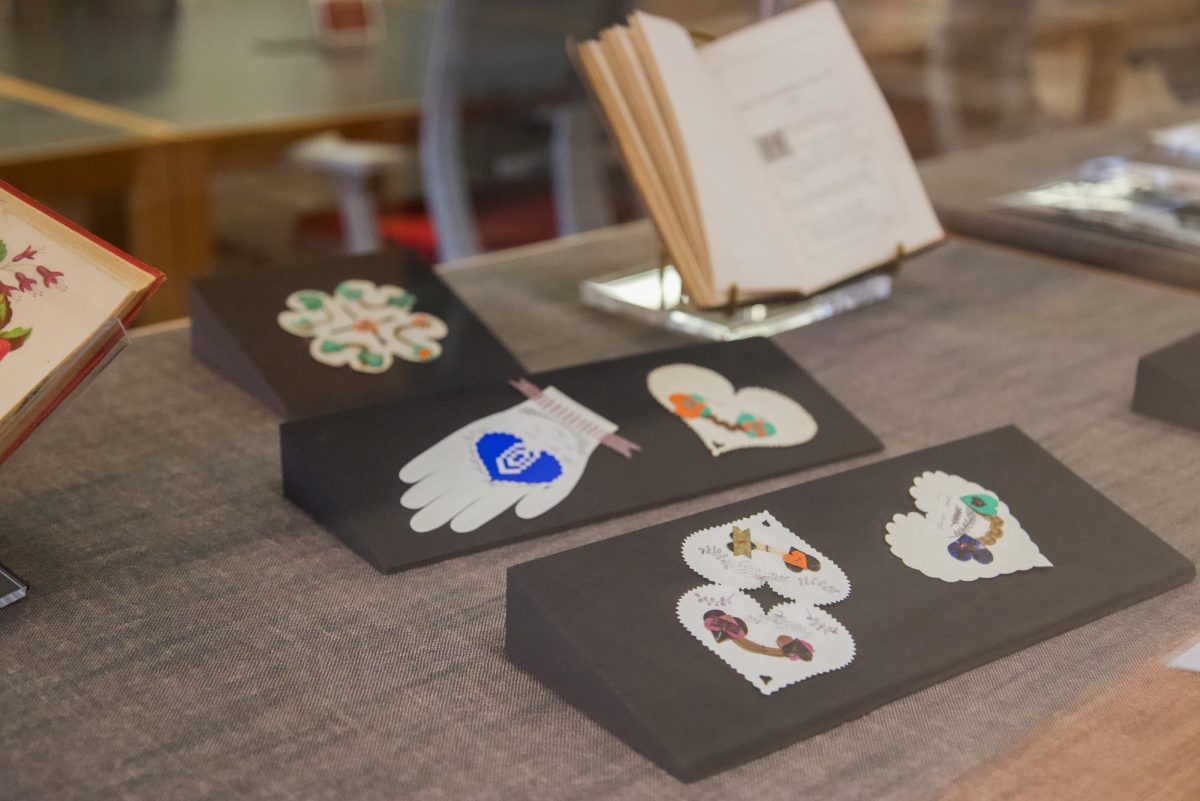From Oct. 3–6, Mosaic Experiment — Ohio’s regional Burning Man event — welcomed people of all ages to gather in Rutland for four days of camping. Attendees are encouraged to embrace artistry and community, following the 10 principles of Burning Man: radical inclusion, gifting, decommodification, radical self-reliance, radical self-expression, communal effort, civic responsibility, leaving no trace, participation, and immediacy. I decided to attend, along with 12 other Oberlin students, to see what the festival was all about.
It was the middle of the night, and we had just arrived at the welcoming meeting. An old man named Dr. Boom Boom and a woman in tie-dye shorts gave us hugs and said “Welcome home, welcome home,” before ushering the 13 of us into golf carts that shuttled us to the campsite.
We drove past lit-up tents and groups of people wearing LED lights and then were dropped off at our theme camp, The Hive.
Our first stop was the pirate tent, where a cluster of middle-aged people were hanging out around a table and makeshift bar. A woman in a white silk corset stood behind the bar, pouring drinks into people’s mouths. Because of the camp’s commitment to leave no trace, there were no disposable materials, which meant that people had to bring their own dishes and utensils. So, it seemed practical for the bartender to instruct patrons to put their heads back and give a thumbs-up when they had taken as much as they could. In the spirit of giving, the liquor, like everything else, was free.
While the pirates chanted for whoever happened to be chugging, I found myself talking to three men who introduced themselves as Motherhugger, Byrd, and Chainmail. Names called “burn names” at Mosaic have the same connotations as a burner phone: a double identity, an alternate or secret self, and, importantly, anonymity. Motherhugger pulled back the folds of his already-open silk robe to show the name written across his chest.
“After my first burn, I went and immediately got my name tattooed,” Motherhugger said.
The weekend was booked with a variety of activities. Some were classics from summer camp, like painting rocks and writing letters to your future self. Others were things I was familiar with from Oberlin, like Jell-O wrestling, howling at the moon, and open mic performances. Finally, there were the things that I had never encountered before, including lessons from a Mistress of Metamorphosis and an artisanal vegan cheese tasting.
I spent my Sunday enjoying a wedding at the Church of the Thirteen Unicorns, presided over by Reverend Boom Boom (same Doctor Boom Boom of the night before); a mass held in honor of “The Void,” aka death, where the Eucharist contained three to four milligrams of THC; getting pranked by a little girl who pointed and laughed: “You got hippie-fished!”; and a throat-singing rendition of “Something in the Way” by Nirvana, performed by a man who looked like Allen Ginsberg.
Then there was the burn itself, which was actually a light show, as recent droughts made it unsafe to actually set things on fire in the woods. While bubbles and fog were pumped out of machines and onto the effigy — a heart within a labyrinth — a group of dancers with light-up accessories went around it in a circle. Soon, more people joined in, and we danced, skipped, and ran around the structure.
Despite all the things in the schedule, the main focus of the event was meeting and talking to the other attendants.
Photobomb, a man in a Santa hat, kimono, and knee-socks, stated that he preferred the Ohio Regional Burning Man to the national one because of its smaller size.
“It makes it easier to meet people,” Photobomb said. “The best part of being here is getting to have good conversations. Everyone here is just themselves, and everyone takes them kindly for who they are.”
What he said seemed true; there was an overwhelming spirit of generosity and inclusion. I picture the crowd at the national Burning Man as it-kids and rave girls, but the crowd at Mosaic seemed like regular hippies and weirdos. Some people seemed interested in the lifestyle of eating vegan cheese and listening to original songs about social justice on acoustic guitar. Others were kind but awkward people looking for interactions that started and ended with hugs and conversations about deep, strange, or niche subjects. From getting their burn names tattooed to converting buses for traveling and camping, there was plenty of evidence that, for many attendees, events like Mosaic give shape to their lives.
The radical kindness and inclusion was simultaneously beautiful and intimidating; the fact that the environment seemed so special to the adult audience made me wonder about the outside world waiting for me after graduation. College has provided me with an opportunity-rich social environment where people are still learning about themselves and willing to accept others in their growth as well. Although it is worth wondering whether a social environment like Mosaic can be maintained in any long-term fashion, it is more worth questioning how we can take the experiences of love and community that we encounter and carry them with us.











